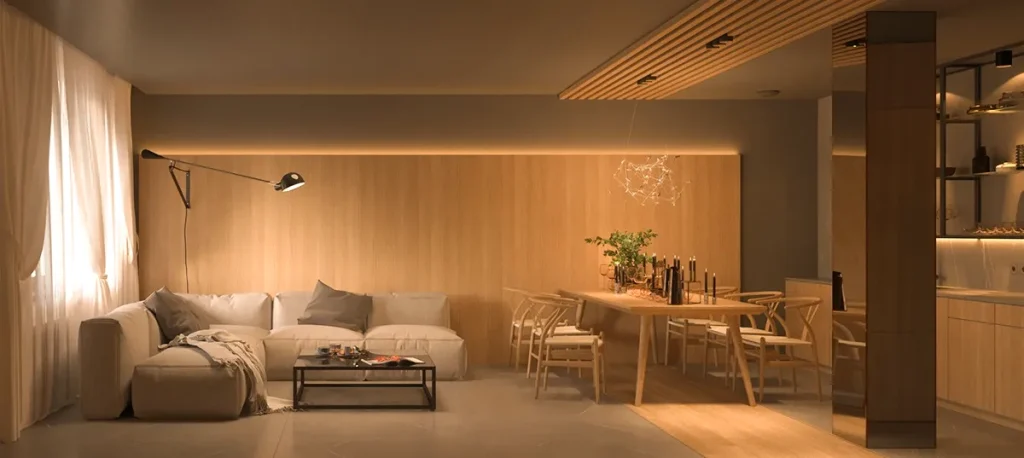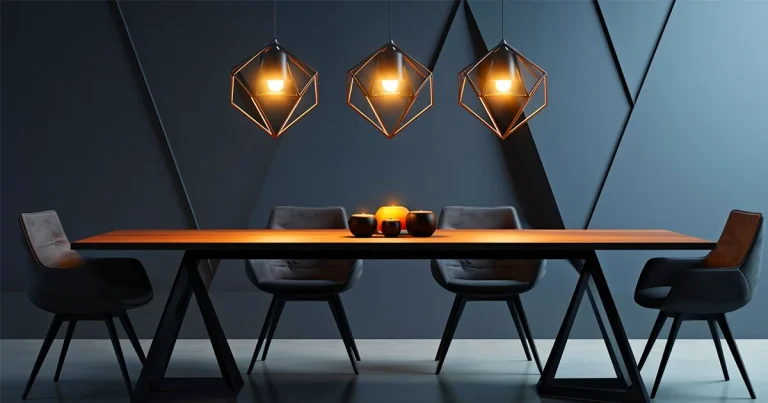Lighting: An Overlooked Subject
When it comes to interior design, lighting is often underestimated. However, lighting plays a crucial role in shaping the ambiance, functionality, and overall aesthetic appeal of a space. Whether it’s natural light streaming through windows or strategically placed fixtures illuminating a room, the right lighting can transform any space into a welcoming and functional environment. In this article, we’ll explore the importance of lighting in interior design and share tips for creating a well-lit and visually stunning space.

1. Setting the Mood:
One of the most significant roles of lighting in interior design is its ability to set the mood of a space. Different lighting techniques can evoke various emotions and create different atmospheres. For example:
- Ambient Lighting: Ambient lighting provides overall illumination and sets the tone for the entire room. Soft, diffused lighting creates a cozy and inviting ambiance, perfect for living rooms and bedrooms.
- Task Lighting: Task lighting is essential for performing specific tasks, such as reading, cooking, or working. Bright, focused lighting is ideal for areas where tasks require close attention, such as kitchens, home offices, and reading nooks.
- Accent Lighting: Accent lighting is used to highlight architectural features, artwork, or other focal points in a room. By drawing attention to these elements, accent lighting adds depth and visual interest to the space.
2. Enhancing Visual Appeal:
In addition to setting the mood, lighting also plays a crucial role in enhancing the visual appeal of a space. Properly illuminated rooms look more spacious, vibrant, and welcoming. Here are some tips for enhancing visual appeal with lighting:
- Layered Lighting: A well-lit room incorporates multiple layers of lighting, including ambient, task, and accent lighting. By layering different types of lighting, you can create depth and dimension in a space while also providing adequate illumination for various activities.
- Natural Light: Natural light is one of the most effective ways to enhance the visual appeal of a space. Large windows, skylights, and glass doors allow natural light to flood into the room, creating a bright and airy atmosphere.
- Lighting Fixtures as Decorative Elements: Lighting fixtures themselves can serve as decorative elements in a room. From elegant chandeliers to sleek pendant lights, the right fixture can add a touch of style and sophistication to any space.
3. Improving Functionality:
In addition to setting the mood and enhancing visual appeal, lighting also plays a crucial role in improving the functionality of a space. Properly illuminated rooms are safer, more comfortable, and more practical to use. Here’s how lighting can improve functionality:
- Task Lighting for Specific Activities: Task lighting is essential for performing specific activities such as cooking, reading, or working. By providing bright, focused illumination where it’s needed most, task lighting makes it easier to see and complete tasks efficiently.
- Safety and Security: Properly illuminated spaces are safer and more secure. Well-lit hallways, staircases, and outdoor areas reduce the risk of accidents and deter intruders.
- Flexible Lighting Solutions: Flexibility is key when it comes to lighting design. Installing dimmer switches, adjustable fixtures, and smart lighting controls allows you to customize the lighting in each room according to your needs and preferences.
4. Maximizing Energy Efficiency:
Finally, lighting also plays a crucial role in maximizing energy efficiency and reducing utility costs. By incorporating energy-efficient lighting fixtures and controls, you can minimize energy consumption while still enjoying a well-lit and visually appealing space. Here are some tips for maximizing energy efficiency with lighting:
- LED Lighting: LED lighting is one of the most energy-efficient lighting options available today. LED bulbs use up to 75% less energy than traditional incandescent bulbs and last much longer, making them an excellent choice for both residential and commercial spaces.
- Smart Lighting Controls: Smart lighting controls allow you to adjust the lighting in your home remotely using a smartphone or tablet. By programming your lights to turn on and off automatically, dimming them when they’re not in use, you can reduce energy consumption and lower your utility bills.
- Natural Light: Maximizing natural light is another effective way to reduce energy consumption. By allowing natural light to flood into your home during the day, you can minimize the need for artificial lighting and take advantage of the sun’s free energy.
To summarize, Lighting plays a crucial role in interior design, setting the mood, enhancing visual appeal, improving functionality, and maximizing energy efficiency. By incorporating the right lighting techniques and fixtures into your space, you can create a welcoming, comfortable, and visually stunning environment that meets your needs and reflects your personal style.

